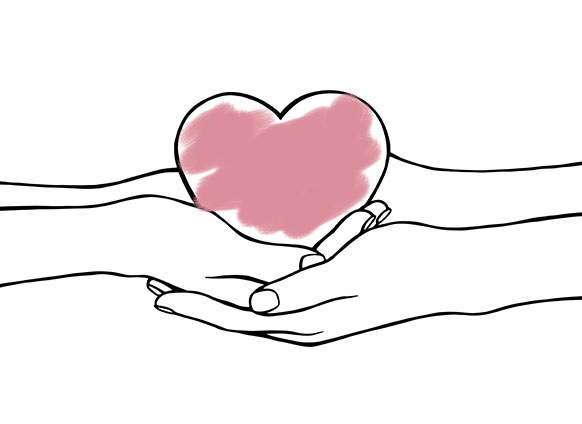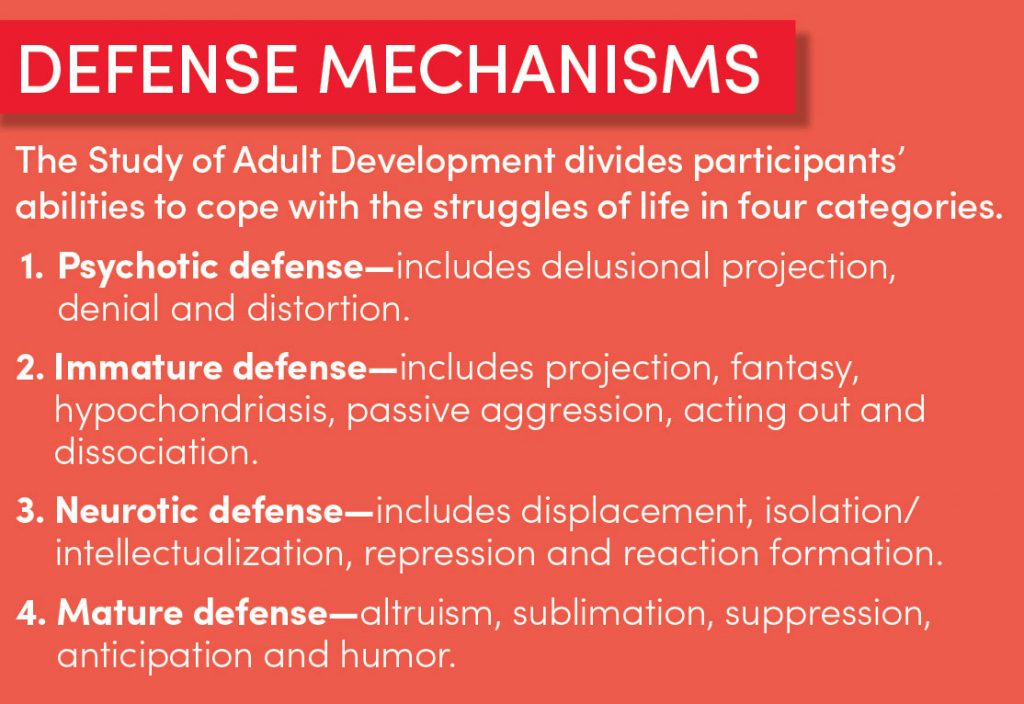“ ‘Real isn’t how you are made,’ said the Skin Horse. ‘It’s a thing that happens to you.’ ”
In 1922 Margery Williams tackled a particularly complex topic in her now beloved children’s book, The Velveteen Rabbit. On its journey to discovering what it means to be Real, the Velveteen Rabbit learns that, in the end, it’s to have someone love you and to be able to accept that love in return.
The classic illustrations and touching lesson offer a comforting bedtime read. But as we age, we’re taught that being Real means paying attention in school, landing a good job, earning a steady income, settling down with a family and preparing for retirement. As adults, we smile nostalgically at the simpler times. Because we know life is more complicated than just loving and being loved.
Right?
In 1938 a physician named Arlie Bock wrote that medicine seemed concerned only with solving individual cases of illnesses. Why, he asked, was no one focused on the bigger picture, a healthy life? Armed with the deep pockets of W.T. Grant, a mass-merchandise chain-store owner, Bock set out to discover what it means to lead a “good life.”
“It’s the most thorough study of human lives that’s ever been done,” says George Vaillant, director of the study from 1972 to 2004. Vaillant, who’s authored eight books covering various aspects of the study, first joined as a researcher in 1966.
The Grant Study, as it was known at the time, later merged to run alongside a contrasting study launched in 1939 by criminologists Sheldon and Eleanor Glueck. The Glueck Study was comprised of 456 underprivileged men living in inner-city Boston, many without hot running water.
Seventy-nine years, four directors, 724 participants, countless staff members and tens of thousands of documents later, study researchers conclude that the single greatest predictor of a mentally, emotionally, physically and spiritually fulfilling life is this:
Love and let yourself be loved.
Researchers from the Grant Study (now called the Harvard Study of Adult Development) selected 268 white college sophomore men from three consecutive class years. Their names and identities, for the most part, were kept anonymous. In the hundreds of articles published throughout the study, clever and poignant pseudonyms were assigned: Sam Lovelace, Alan Poe, Dylan Bright, Charles Boatwright, Godfrey Minot Camille. But real names were leaked, including the late Washington Post editor Ben Bradlee and President John F. Kennedy (though details regarding Kennedy’s participation are sealed until 2040). Harvard students Norman Mailer and Leonard Bernstein were rejected.
In the late 1930s, physical capacity was considered the strongest predictor of success. Harvard University, filled with confident men from suburban homes who filled crimson jackets with broad shoulders and slim waists, was an appealing choice. The selected men were considered those generally likely to succeed—a definition rooted in 1930s beliefs.
“Happiness is love. Full stop.”
To get a comprehensive look at what constituted a well-rounded life, doctors were selected from various backgrounds and brought to a converted living room in a large Victorian house on Harvard Square. They recorded everything from earlobes (free or attached?) to the type of toes (are they webbed?). Parents were asked when their child first wet the bed and how they learned about sex. Researchers interviewed participants for hours about everything from their political views to diet preferences. Every tattoo, mole and skin discoloration was marked, measured and recorded.
Not included in those early days of the study are the predictors of success we find mainstream today: emotional intelligence, altruism, mental fortitude. This exclusion might explain why several dozen of the Harvard men, who grew up in loveless homes and struggled with alcohol abuse and depression, were selected as “likely to succeed.”
“At the time, the study had no appreciation for how important relationships were,” Vaillant says. “They said you want to be a masculine body build; you want to be a good athlete; you want to have high social class and run for a long time on a treadmill.”
The study, which originally coincided with World War II, was as much about identifying a good soldier as it was defining what a well-rounded life looks like. Just as the men grew and changed throughout their lives, so did the study under direction from four different men specializing in four different fields. Throughout it all, though, an aggravatingly simple recipe remains: Surround yourself with positive, healthy relationships and you’ll find happiness, a long life and fulfillment.
In a time when people sacrifice sleep, families, relationships and free time to “lean in” to their careers, 80 years of research says they might be leaning the wrong way.
***
Godfrey Minot Camille was a troubled child. His parents were upper class, but as Vaillant describes in Triumphs of Experience, they were “pathologically suspicious.” They didn’t provide warmth and tenderness toward Camille. They forbade him from expressing negative emotions. They hired a nanny to walk him to and from school, yet forced him to eat meals alone.
Camille entered the study at 19, a hypochondriac whose childhood was said to be one of the bleakest in the study. Life at Harvard was similarly bleak. He spent hours at the university infirmary, complaining of imaginary symptoms. He was a scrawny man who struggled with school and connecting with peers. By all accounts, and certainly by the study’s standards, Camille was destined for a lonely life void of meaning and achievement. He graduated, joined the military (where he remained a private throughout his entire service), graduated from medical school, yet was deemed “not fitted for the practice of medicine” by study researchers. Shortly after, he attempted suicide.
Then something happened. At 35, Camille was hospitalized for more than a year with tuberculosis. He refers to that time as a sort of spiritual awakening. “Someone with a capital ‘S’ cared about me,” he later wrote. Over time and through psychotherapy and reflection, Camille learned to dissociate from his loveless childhood—Vaillant categorizes this as a “neurotic” defense mechanism, common in “normal” people. He continued to develop into using a “mature” defense, categorized by altruism.
Well into old age, Camille wrote the following in his Harvard reunion 50th anniversary autobiography:
Since it wasn’t widely available then, I hadn’t read that children’s classic, The Velveteen Rabbit, which tells how connectedness is something we must let happen to us, and then we become solid and whole. As that tale recounts tenderly, only love can make us real. Denied this in boyhood for reasons I now understand, it took me years to tap substitute sources. What seems marvelous is how many there are and how restorative they prove. What durable and pliable creatures we are, and what a storehouse of goodwill lurks in the social fabric…. I never dreamed my later years would be so stimulating and rewarding.
How did a middle-aged loner suffering from hypochondria and suicidal tendencies become an empathetic, reflective and loving old man? Because love, Vaillant says, is not just about the giving, but about finding a way of coping with life that doesn’t push love away. In his early adulthood, Camille used “immature” adaptation to defend against the pain of a loveless childhood. In a search for connection and love, he imagined symptoms that would require someone to care for him.
“Loneliness kills. It’s as powerful as smoking or alcoholism.”
In his later years, Camille was an exemplary study participant. That’s not to say his life was easy. In fact, in his late 50s, Camille suffered from depression, which cost him his job, savings and wife. And yet he persisted, turning the dips of life into opportunities for growth. He became an accomplished physician, reconnected with his children and forged positive relationships with those in his community.
“The journey from immaturity to maturity is sort of a movement from narcissism to connection, and a big part of this shift has to do with the way we deal with challenges,” Vaillant says.
At 82, Camille died from a heart attack while climbing the Alps, one of his favorite retirement activities. The funeral was held at his childhood church, where he had returned to become an active member, and was crowded with community members eager to celebrate the life of a generous and wholehearted man.
“Folks change,” Vaillant writes. “But they stay the same, too. Camille had spent his years before the hospital looking for love, too. It just took him a while to learn how to do it well.”
***
About 60 of the original 724 men in both studies are still alive. Sometimes, like with Camille, their deaths affect Vaillant. But most of the time, his researcher’s eye sees 70-odd years of data, ready to be combined with hundreds of other data points to create a picture of something bigger and more meaningful.
That picture helps debunk long-held beliefs, like the idea that your identity becomes fixed by age 30. Or that attending an Ivy League school and achieving your biggest goals protects you from depression or mental illness.
The men who helped create this picture were doctors, lawyers and scientists. They were also homeless, jobless and suffering from mental illnesses that weren’t apparent in smiling class photos. Bradlee, the longtime Post editor, begins his memoir, Good Life, with his first visit to the study, where a psychiatrist first described him as, “[having] a rather immature, emotional and romantic outlook on what he wants to do.”
An increasingly “romantic” and confused Bradlee was similarly described at a six-month follow-up. Later he would lead a team of journalists to uncover one of the biggest presidential scandals in history.
Vaillant says that’s why this study is so powerful and so rare. Life is an album, not a snapshot. You can’t look at a single photo of someone’s life and understand the ebbs and flows of their maturity and growth. Just as Camille’s search for love and healing brought him peace, the opposite was also true. One participant, a Harvard legacy from a wealthy family, excelled in class, thrived in sports, debate and social events. He later ran several successful companies and earned more than a respectable living. He lost everything to alcoholism and died after falling down stairs drunk.
“We can’t choose our childhoods, but the story of Godfrey Minot Camille reveals that bleak ones do not doom us,” Vaillant writes in Triumphs of Experience. “If you follow lives long enough, people adapt and they change, and so do the factors that affect healthy adjustment.”
***
Valliant has dedicated his life to the study, and it shows. He’s no longer director, but he’s still very much involved. He interviewed the Harvard men for his latest book, Heaven on My Mind, which explores whether people become more religious and spiritual with age (they don’t). He’s explored whether Alcoholics Anonymous is more effective than drug therapy (it is) and why long marriages don’t survive out of happiness or romantic love, but rather knowing that you can count on your partner when it really matters.
“I could give you example after example, but it’s following people for long periods of time that you find out what’s important,” Vaillant says. “And it’s not what you think.”
Robert Waldinger, Ph.D., is director of the second phase of the study, which looks at the wives, children and grandchildren of the Grant and Glueck men. Like the three directors before him, he has his own theories to prove. But the recipe of a good life, like always, remains the same: Foster and cherish positive relationships. Your life depends on it.
“Loneliness kills,” Waldinger says. “It’s as powerful as smoking or alcoholism.”
So with 79 years of data supporting such a simple idea, why do we let miscommunication break down our marriages and divide our families? Why do we let friendships fade? Because working at relationships every day is hard. Vaillant, who has been divorced three times and endured long periods of strained relationships with his children, knows this more than most.
“I’ve done my best,” Vaillant says. “But it’s not as simple as getting out of bed in the morning and deciding I’m going to be a warm, loving person, and allow the people around me to love me, too.”
It took the Skin Horse a lifetime of experience to understand what it means to be Real. The Velveteen Rabbit found its own version of Real by learning from a life that began long before.
“By the time you are Real, most of your hair has been loved off, and your eyes drop out and you get loose in the joints and very shabby. But these things don’t matter at all, because once you are Real, you can’t be ugly, except to people who don’t understand.”







